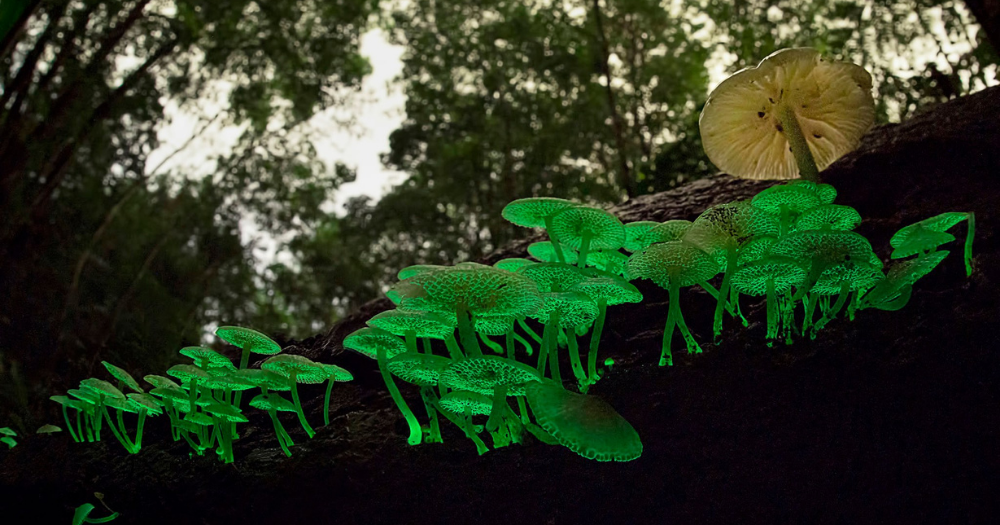Follow us on Telegram for the latest updates: https://t.me/mothershipsg
People are often drawn towards larger, charismatic wildlife — think otters, hornbills, and owls.
However, the small and seemingly insignificant wild beings around us can be really interesting too if one pays attention to them.
Take these glow-in-the-dark mushrooms for example.
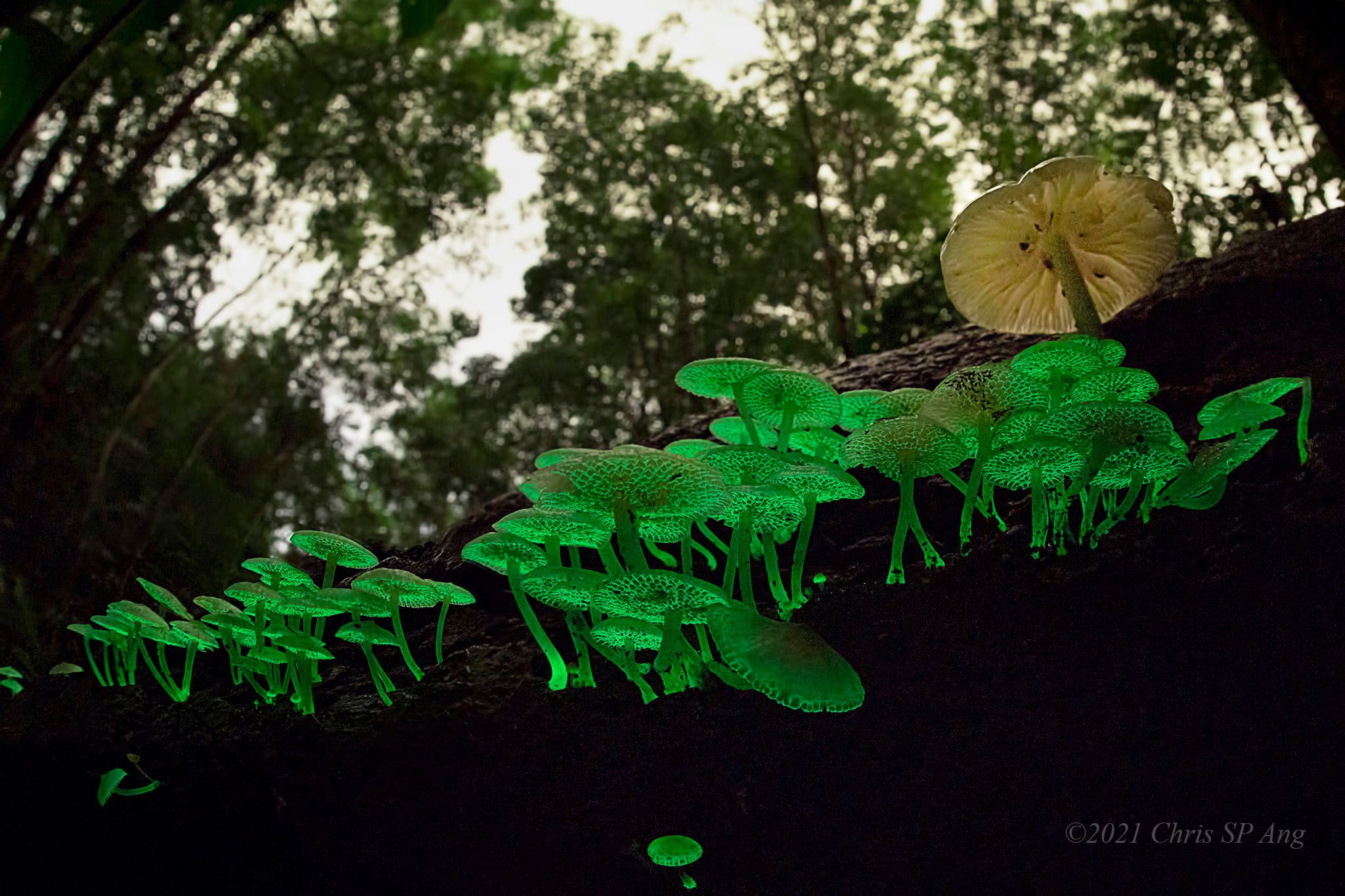 Photo courtesy of Chris Ang, via Chris Ang Photography/Facebook.
Photo courtesy of Chris Ang, via Chris Ang Photography/Facebook.
Bioluminescent mushrooms
Recently, some nature lovers caught sight of these bioluminescent mushrooms at Bukit Batok Hillside Park.
These mushrooms which look pale in the daylight can actually produce light in the dark.
Light-emitting compounds called luciferin that are present inside these mushrooms react with oxygen molecules in the air. This enzyme-catalysed chemical reaction causes the mushroom to produce light, similar to how fireflies light up.
And yes, we can see the mushrooms glowing in the dark with our naked eyes.
Chris Ang, a long-time nature enthusiast, was able to capture this fascinating sight using a digital camera with long exposure of about 60 to 180 seconds with a macro lens, he said to Mothership.
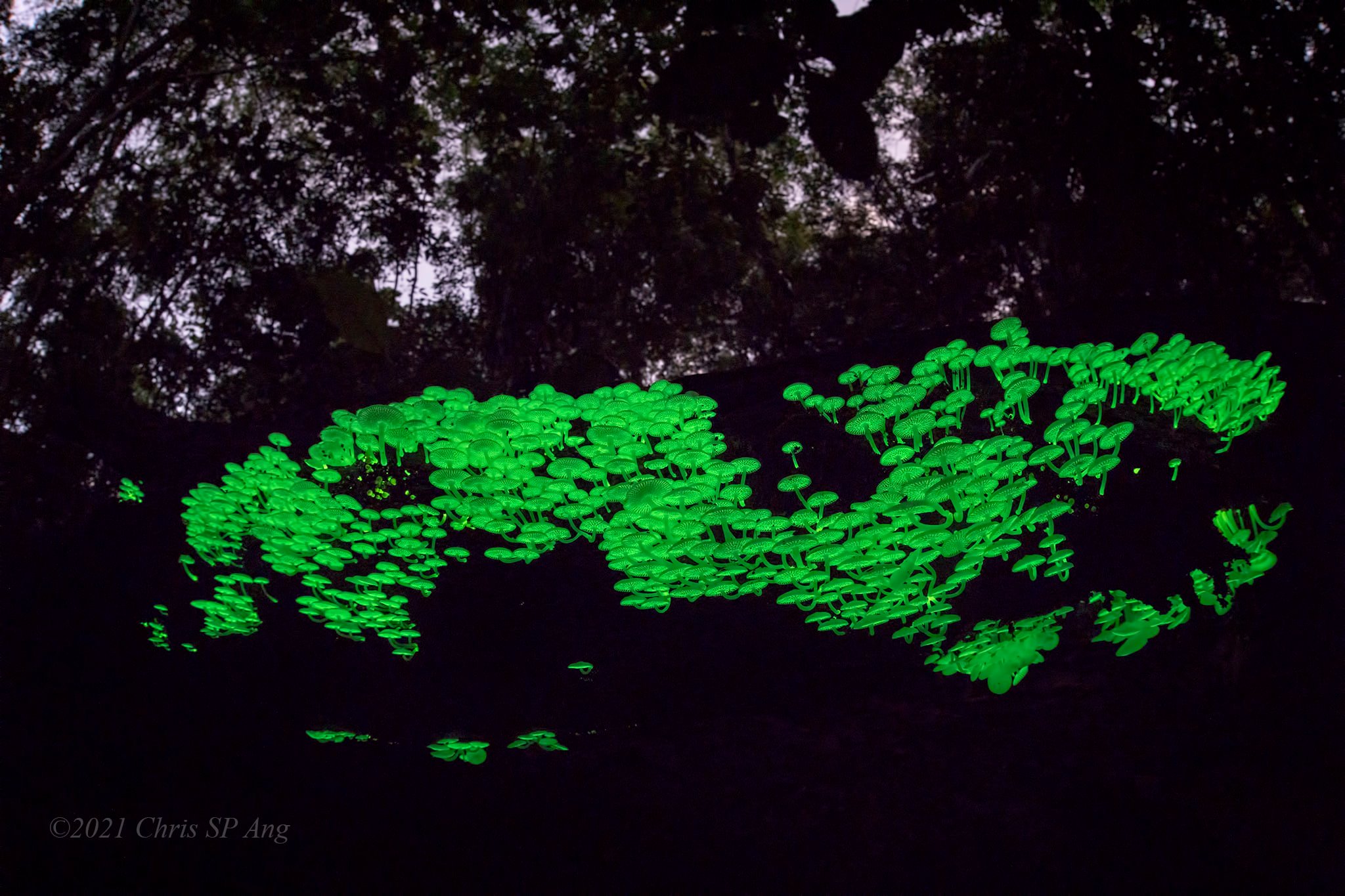 Photo courtesy of Chris Ang, via Chris Ang Photography/Facebook.
Photo courtesy of Chris Ang, via Chris Ang Photography/Facebook.
How these photos were taken:
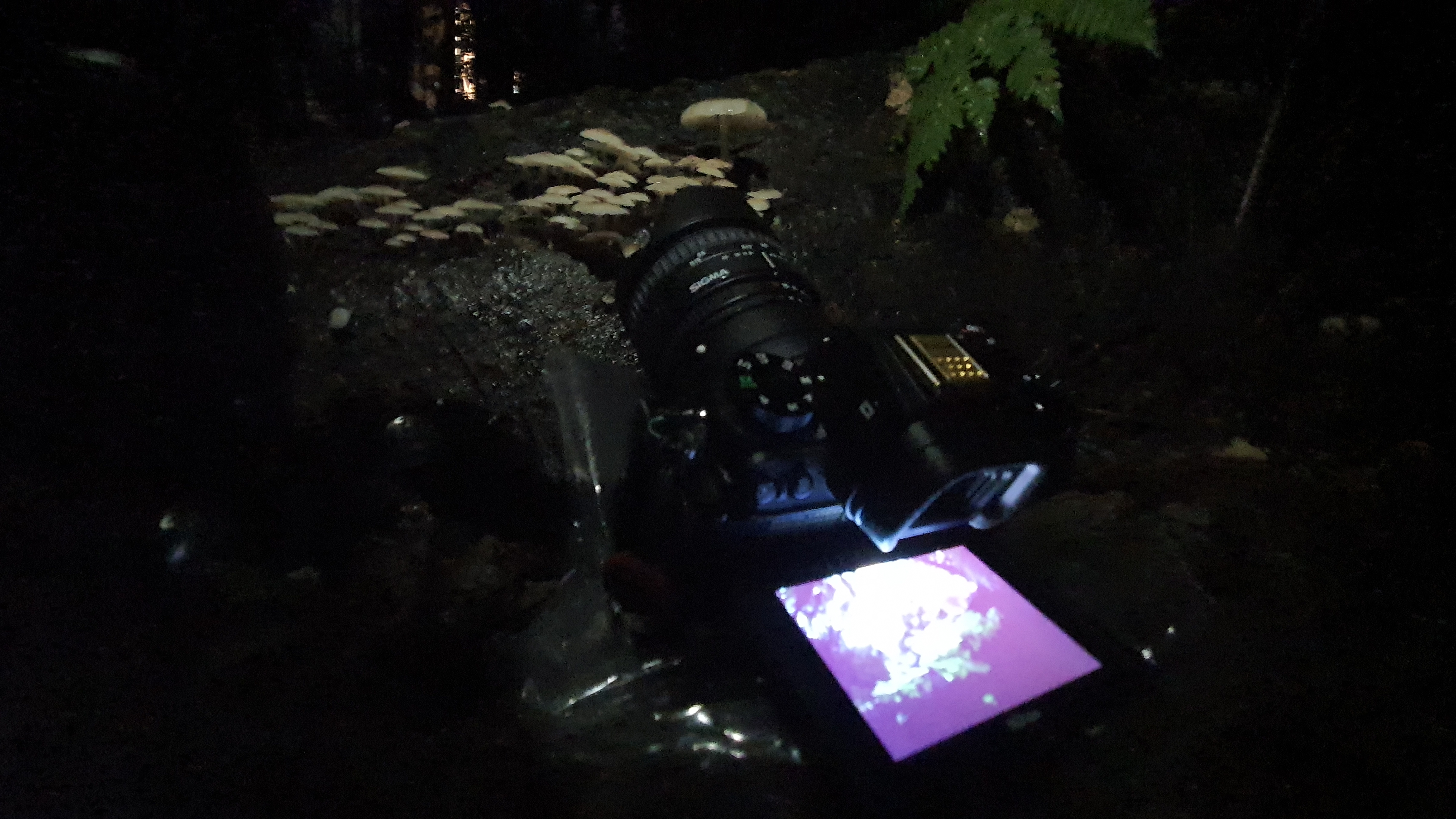 Photo courtesy of Chris Ang.
Photo courtesy of Chris Ang.
Here's a video showing how the mushrooms look in the day and at night:
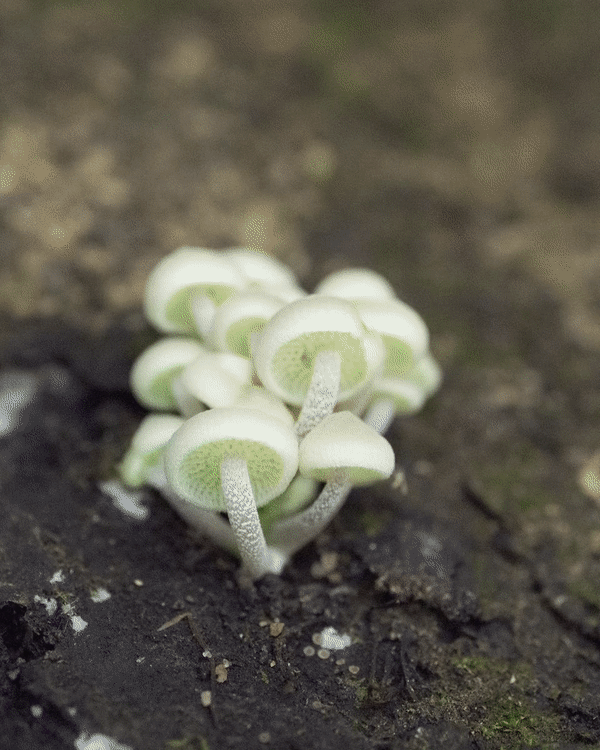 Video by Chris Ang, via Chris Ang Photography/Facebook.
Video by Chris Ang, via Chris Ang Photography/Facebook.
Common in Southeast Asia
This species of mushroom, named Filoboletus manipularis, is common in Southeast Asia. In Singapore, they have been spotted in green spaces like MacRitchie too.
There are over 80 bioluminescent fungi in this world and two of the more common ones that can be found in Singapore are Mycena illuminans and Filoboletus manipularis. Both species are about 2-3cm tall and 1-2 cm in diameter in size, Ang added.
While the existence of glowing mushrooms was discovered some two thousand years ago, it was only in recent years that people started studying why and how these fungi produce light, according to a 2012 article from GardenWise, a magazine by Singapore Botanic Gardens.
It is speculated that the mushrooms could possibly be emitting light to attract invertebrates to increase spore dispersal. It might also have no ecological purpose; a by-product of an oxidative reaction when the mushrooms cause wood to rot.
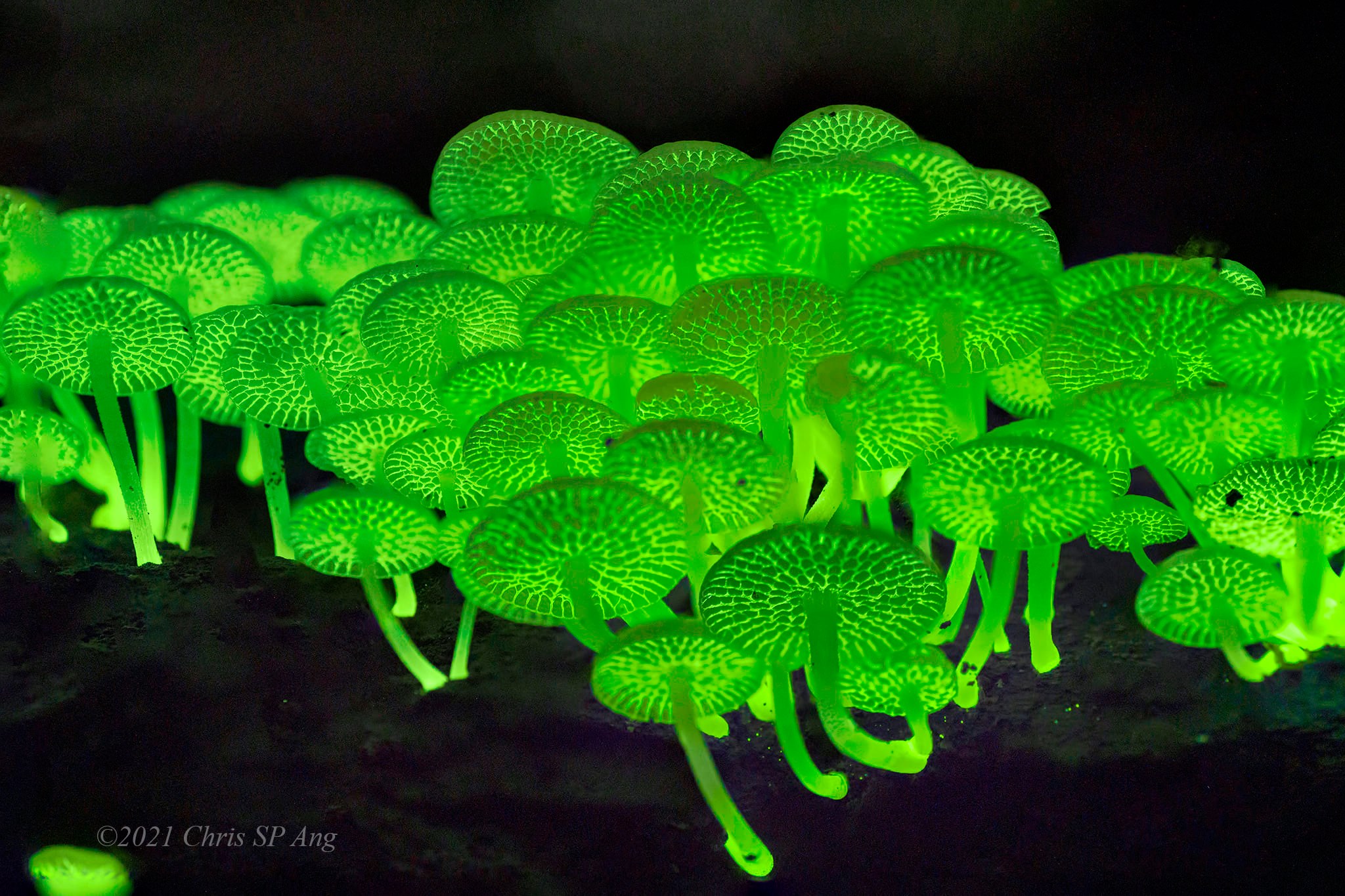 Photo courtesy of Chris Ang, via Chris Ang Photography/Facebook.
Photo courtesy of Chris Ang, via Chris Ang Photography/Facebook.
The best chance to come across these glow-in-the-dark mushrooms is after heavy rain, according to NParks researcher Michele Rodda.
That said, you should not be going off trail when you visit nature areas in search of these tiny mushrooms which, in general, have very short lifespans too (as short as a day).
Going off trail can possibly cause damage to the forest floors. You might affect animal movement or trample on plant saplings by accident.
Densely vegetated areas could be unsafe to hikers too as people might get lost in the forest or encounter hornets and falling branches.
Related stories
Top image courtesy of Chris Ang
If you like what you read, follow us on Facebook, Instagram, Twitter and Telegram to get the latest updates.
